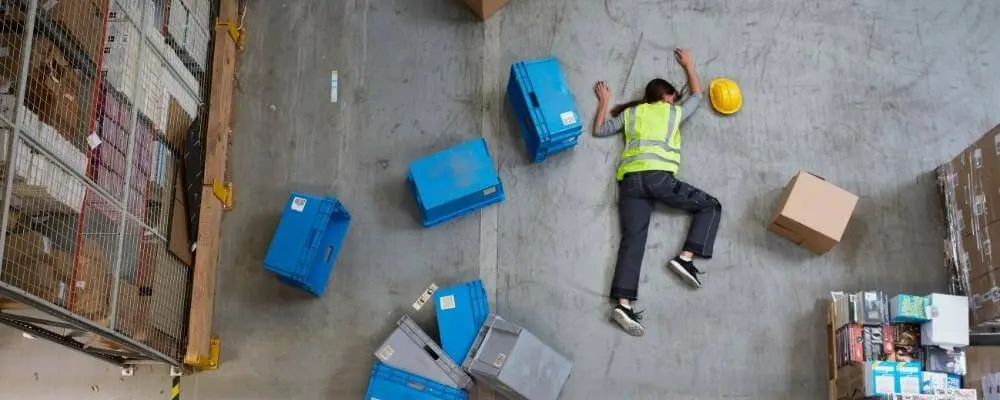In the intricate ecosystem of safety management, understanding the distinction between surface causes and root causes is paramount. When an incident occurs, the immediate reaction is to fix what’s visible and move on. However, without digging deeper to uncover the underlying issues, we risk a repetition of such incidents. This blog post is a magnifying glass highlighting the key differences between these two pivotal terms.
By dissecting and examining the elements of surface causes and root causes, we will empower you with the knowledge to rectify immediate problems and initiate long-term solutions that foster a safer and more efficient environment. Through practical examples, this post will illuminate the distinctions, the interplay between these causes, and how to approach them effectively.
Whether you are a safety manager, a policymaker, an employee, or someone eager to comprehend the building blocks of safety analysis, this blog is your guide. Take the step to transcend the surface and root out the real challenges. Let’s get started!
What are Surface Causes?
The surface causes of accidents are those hazardous conditions and unsafe or inappropriate behaviors within the sequence of events that have directly caused or contributed in some way to the accident. Understanding that surface causes describe unique conditions or individual behaviors is important.
A hazardous condition is characterized by the following:
- A unique tool, piece of equipment, machinery, etc., that is not adequately guarded or is somehow defective
- An employee’s “state of being,” such as fatigue or being distracted
- It may also be a unique defect in a process, procedure, or practice
- It may exist at any level of the organization.
- Is the result of deeper root causes
Unsafe or Inappropriate Behaviors are characterized by the following:
- Taking an intentional/unintentional action that is unsafe or failing to take a safe action
- A unique performance error in a process, procedure, or practice
- It may exist at any level of the organization.
- Are the result of deeper root causes
It’s important to know that most hazardous workplace conditions result from the unsafe or inappropriate behaviors that produce them.

What are the Root Causes?
The root causes for accidents are the underlying SMS weaknesses that consist of thousands of variables, any number of which can somehow contribute to the surface causes of accidents. This level of investigation is also called “common cause” analysis (in quality terms) because you’re identifying a system component that may contribute to common conditions and behaviors that exist or occur throughout the company. These weaknesses can take two forms.
SMS Design Root Causes
Inadequate design of one or more safety management system components. The design of safety management system policies, plans, programs, processes, procedures, and practices is very important to ensure appropriate conditions, activities, behaviors, and practices occur consistently throughout the workplace. Design root causes describe the “condition” of the SMS and contribute to most accidents.
SMS Performance Root Causes
Inadequate implementation of one or more components of the SMS. After each SMS component is designed, it must be effectively implemented. Performance root causes describe the “behavior” of the SMS. You may design an effective safety plan yet suffer failure because it wasn’t implemented properly. On the other hand, if you effectively implement a poorly designed component, you’ll get the same results: inadequate system performance.

Difference Between Surface Cause & Root Cause And Examples
Surface Cause and Root Cause are terms often used in incident analysis and risk management. Here’s the breakdown of their differences:
| Aspect | Surface Cause | Root Cause |
|---|---|---|
| Nature of Cause | Immediate factors that directly led to an incident. | Underlying factors or systemic issues contributing to surface causes. |
| Level of Analysis | Basic investigation focused on the specific incident. | Thorough investigation exploring broader systemic issues, policies, procedures, and organizational culture. |
| Example | Surface Cause: Employee slips on a wet floor. Presence of a wet floor is the surface cause. | Root Cause: No procedure for promptly cleaning up spills (design issue) or procedure not followed due to lack of training (performance issue). |
| Impact of Resolution | Prevents the recurrence of the same type of incident but doesn’t address other potential risks. | Prevents a wide range of incidents by addressing systemic issues. |
| Time Perspective | Short-term and momentary, focused on immediate events leading up to an incident. | Long-term, looking at trends, patterns, and systemic issues developed over time. |
| Addressability | Typically easy to identify and address but only solves the immediate problem. | More challenging to identify and may require significant organizational changes, but addresses the core issue. |
| Scope | Specific conditions or actions at the time of the incident. | Organization-wide policies, procedures, culture, and systemic issues. |
| Example of Resolution | Mopping up the wet floor to prevent another slip. | Implementing and enforcing a procedure for promptly cleaning up spills and training staff in proper maintenance. |

Nature of Cause:
- Surface Cause: Surface causes are the immediate factors that led to an incident or accident. They are visible and usually easy to identify. They represent the specific conditions or actions that directly contributed to the event.
- Root Cause: Root causes are the underlying factors or systemic issues contributing to the surface causes. These are often hidden and require a deeper level of investigation to uncover. They are typically systemic or organizational issues that contribute to an incident by creating an environment where surface causes can arise.
Level of Analysis:
- Surface Cause: Requires a basic level of investigation focused on the specific incident. It does not dig deeper into systemic issues or underlying organizational factors.
- Root Cause: Requires a thorough investigation beyond the specific incident to explore broader systemic issues, policies, procedures, and organizational culture.
Example:
- Surface Cause: An employee slips on a wet floor and falls. The surface cause is the presence of a wet floor.
- Root Cause: The deeper investigation might reveal no procedure for promptly cleaning up spills (SMS Design Root Cause). Or, there may be a procedure, but it’s not being followed because the staff has not been adequately trained (SMS Performance Root Cause).
Impact of Resolution:
- Surface Cause: Addressing a surface cause usually prevents the recurrence of the same type of incident but does not address other potential risks. For example, mopping up the wet floor might prevent another slip and fall, but it does not address why the floor was wet in the first place.
- Root Cause: Addressing a root cause can prevent many incidents because it deals with systemic issues. For example, implementing and enforcing a procedure for promptly cleaning up spills can prevent slips and falls and other incidents related to workplace cleanliness and maintenance.
Time Perspective:
- Surface Cause: Usually short-term and momentary, focused on the immediate events leading up to an incident.
- Root Cause: Usually long-term, looking at trends, patterns, and systemic issues that have developed over time.
While surface causes provide insights into the immediate factors that lead to an incident, root causes allow for a more comprehensive understanding of the underlying issues that must be addressed to prevent future incidents and improve overall safety.
Conclusion
In conclusion, differentiating between surface causes and root causes is essential in creating a robust safety management system. Surface causes are the visible and immediate factors in incidents, whereas root causes are the underlying systemic issues that necessitate more profound analysis. By understanding and addressing both, organizations can effectively mitigate the symptoms and the sources of safety hazards, creating a more secure and productive environment. This blog post has equipped you with definitions, distinctions, and examples, serving as a foundation for enlightened decision-making in safety management.

